Transfer Learning with Convolutional Neural Networks for Diabetic Retinopathy Image Classification. A Review
Abstract
1. Introduction
2. Convolutional Neural Networks and Transfer Learning
2.1. Convolution Layers
2.2. Activation Layers
2.2.1. Sigmoid Function
2.2.2. Tanh Activation Function
2.2.3. ReLU Activation Function
2.2.4. LeakyReLU Activation Function
2.2.5. Softmax Activation Function
2.3. Pooling Layers
2.3.1. Maximum Pooling
2.3.2. Average Pooling
2.4. Flattening Layers
2.5. Dense Layers
2.6. Dropout Layer
2.7. Regularization Layers
2.7.1. Regularization
2.7.2. Regularization
2.7.3. Elastic Net Regularization
2.8. Batch Normalization Layers
2.9. Transfer Learning
3. CNN Architectures
3.1. VGG Network Architecture
3.2. ResNet Network Architecture
3.3. GoogLeNet Network Architecture
3.4. AlexNet Network Architecture
3.5. DenseNet Network Architecture
3.6. Xception Network Architecture
4. DR Datasets
4.1. Kaggle Dataset
4.2. Messidor Dataset
4.3. DR1 Dataset
4.4. E-ophtha Dataset
4.5. STARE Dataset
5. Paper Review
6. Discussion
6.1. Architectures Used
6.2. The Datasets Used
6.3. The Optimizers Used
6.4. The Performance Difference by Applying Transfer Learning
6.5. The Fine-Tuning Technique
6.6. Performance Validation
7. Open Questions
7.1. The Effect of Layer-Wise Fine-Tuning Instead of Full Fine-Tuning on DR Image Classification
7.2. The Effect of the Optimizer Used and the Learning Rate Used in DR Image Classification
7.3. The Effect of the Batch Size Used in DR Image Classification
7.4. The Effect of Choosing Another Dataset Than ImageNet
7.5. The Effect of Image Augmentation
8. Conclusions
Author Contributions
Funding
Conflicts of Interest
References
- Chen, L.; Magliano, D.J.; Zimmet, P.Z. The worldwide epidemiology of type 2 diabetes mellitus—Present and future perspectives. Nat. Rev. Endocrinol. 2012, 8, 228–236. [Google Scholar] [CrossRef]
- Cho, N.H.; Shaw, J.; Karuranga, S.; Huang, Y.; da Rocha Fernandes, J.D.; Ohlrogge, A.; Malanda, B. IDF Diabetes Atlas: Global estimates of diabetes prevalence for 2017 and projections for 2045. Diabetes Res. Clin. Pract. 2018, 138, 271–281. [Google Scholar] [CrossRef] [PubMed]
- Okur, M.; Karantas, I.; Siafaka, P. Diabetes Mellitus: A Review on Pathophysiology, Current Status of Oral Medications and Future Perspectives. Acta Pharm. Sci. 2017, 55, 61–82. [Google Scholar]
- Lotfy, M.; Adeghate, J.; Kalasz, H.; Singh, J.; Adeghate, E. Chronic Complications of Diabetes Mellitus: A Mini Review. Curr. Diabetes Rev. 2015, 13, 3–10. [Google Scholar] [CrossRef] [PubMed]
- Gupta, A.; Chhikara, R. Diabetic Retinopathy: Present and Past. Procedia Comput. Sci. 2018, 132, 1432–1440. [Google Scholar] [CrossRef]
- Zheng, Y.; He, M.; Congdon, N. The Worldwide Epidemic of Diabetic Retinopathy. Indian J. Ophthalmol. 2012, 60, 428. [Google Scholar] [CrossRef]
- Bourne, R.; Stevens, G.A.; White, R.; Smith, J.L.; Flaxman, S.R.; Price, H.; Jonas, J.B.; Keeffe, J.; Leasher, J.; Naidoo, K.; et al. Causes of vision loss worldwide, 1990–2010: A systematic analysis. Lancet Glob. Health 2013, 1, e339–e349. [Google Scholar] [CrossRef]
- Vashist, P.; Singh, S.; Gupta, N.; Saxena, R. Role of Early Screening for Diabetic Retinopathy in Patients with Diabetes Mellitus: An Overview. Indian J. Community Med. 2011, 36, 247–252. [Google Scholar] [CrossRef]
- Abramoff, M.; Niemeijer, M.; Russell, S. Automated Detection of Diabetic Retinopathy: Barriers to Translation into Clinical Practice. Expert Rev. Med. Devices 2010, 7, 287–296. [Google Scholar] [CrossRef]
- Wilkinson, C.P.; Ferris, F.L.; Klein, R.E.; Lee, P.P.; Agardh, C.D.; Davis, M.; Dills, D.; Kampik, A.; Pararajasegaram, R.; Verdaguer, J.T. Proposed international clinical diabetic retinopathy and diabetic macular edema disease severity scales. Ophthalmology 2003, 110, 1677–1682. [Google Scholar] [CrossRef]
- Mitchell, T.M. Machine Learning, 1st ed.; McGraw-Hill Inc.: New York, NY, USA, 1997; ISBN 0070428077. [Google Scholar]
- Goodfellow, I.; Bengio, Y.; Courville, A. Deep Learning; The MIT Press: Cambridge, MA, USA, 2016; ISBN 9780262035613. [Google Scholar]
- LeCun, Y.; Boser, B.; Denker, J.S.; Henderson, D.; Howard, R.E.; Hubbard, W.; Jackel, L.D. Backpropagation Applied to Handwritten Zip Code Recognition. Neural Comput. 1989, 1, 541–551. [Google Scholar] [CrossRef]
- Krizhevsky, A.; Sutskever, I.; Hinton, G. ImageNet Classification with Deep Convolutional Neural Networks. In Neural Information Processing Systems; Curran Associates Inc.: Lake Tahoe, NY, USA, 2012; Volume 25. [Google Scholar]
- Russakovsky, O.; Deng, J.; Su, H.; Krause, J.; Satheesh, S.; Ma, S.; Huang, Z.; Karpathy, A.; Khosla, A.; Bernstein, M.; et al. ImageNet Large Scale Visual Recognition Challenge. Int. J. Comput. Vis. 2014, 115, 211–252. [Google Scholar] [CrossRef]
- Collobert, R.; Weston, J. A Unified Architecture for Natural Language Processing: Deep Neural Networks with Multitask Learning. In Proceedings of the 25th International Conference on Machine Learning; ACM: New York, NY, USA, 2008. [Google Scholar] [CrossRef]
- Dos Santos, C.; Gatti de Bayser, M. Deep Convolutional Neural Networks for Sentiment Analysis of Short Texts. In Proceedings of COLING 2014, the 25th International Conference on Computational Linguistics; Dublin City University and Association for Computational Linguistics: Dublin, Ireland, 2014. [Google Scholar]
- Kalchbrenner, N.; Grefenstette, E.; Blunsom, P. A Convolutional Neural Network for Modelling Sentences. arXiv 2014, arXiv:1404.2188. [Google Scholar]
- Zhao, B.; Lu, H.; Chen, S.; Liu, J.; Wu, D. Convolutional neural networks for time series classification. J. Syst. Eng. Electron. 2017, 28, 162–169. [Google Scholar] [CrossRef]
- Wang, Z.; Yan, W.; Oates, T. Time series classification from scratch with deep neural networks: A strong baseline. In Proceedings of the 2017 International Joint Conference on Neural Networks (IJCNN), Anchorage, AK, USA, 14–19 May 2017; pp. 1578–1585. [Google Scholar]
- Ishtiaq, U.; Kareem, S.; Rahayu, E.; Mujtaba, G.; Jahangir, R.; Ghafoor, H. Diabetic retinopathy detection through artificial intelligent techniques: A review and open issues. Multimed. Tools Appl. 2019, 78, 1–44. [Google Scholar] [CrossRef]
- Amin, J.; Sharif, M.; Yasmin, M. A Review on Recent Developments for Detection of Diabetic Retinopathy. Scientifica 2016, 2016, 1–20. [Google Scholar] [CrossRef]
- Paranjpe, M. Review of methods for diabetic retinopathy detection and severity classification. Int. J. Res. Eng. Technol. 2014, 3, 619–624. [Google Scholar]
- Nørgaard, M.F.; Grauslund, J. Automated Screening for Diabetic Retinopathy–A Systematic Review. Ophthalmic Res. 2018, 60, 9–17. [Google Scholar] [CrossRef] [PubMed]
- Padhy, S.K.; Takkar, B.; Chawla, R.; Kumar, A. Artificial intelligence in diabetic retinopathy: A natural step to the future. Indian J. Ophthalmol. 2019, 67, 1004–1009. [Google Scholar]
- Dumoulin, V.; Visin, F. A Guide to Convolution Arithmetic for Deep Learning. arXiv 2016, arXiv:abs/1603.07285. [Google Scholar]
- Xu, B.; Wang, N.; Chen, T.; Li, M. Empirical Evaluation of Rectified Activations in Convolutional Network. arXiv 2015, arXiv:1505.00853. [Google Scholar]
- Nair, V.; Hinton, G. Rectified Linear Units Improve Restricted Boltzmann Machines Vinod Nair. In Proceedings of ICML; ACM: New York, NY, USA, 2010; Volume 27, pp. 807–814. [Google Scholar]
- Maas, A.L.; Hannun, A.Y.; Ng, A.Y. Rectifier nonlinearities improve neural network acoustic models. In Proceedings of the ICML Workshop on Deep Learning for Audio, Speech, and Language Processing, Atlanta, GA, USA, 16 June 2013. [Google Scholar]
- Ouahabi, A. A review of wavelet denoising in medical imaging. In Proceedings of the 2013 8th International Workshop on Systems, Signal Processing and their Applications (WoSSPA), Algiers, Algeria, 12–15 May 2013; pp. 19–26. [Google Scholar]
- Scherer, D.; Müller, A.; Behnke, S. Evaluation of Pooling Operations in Convolutional Architectures for Object Recognition; Springer: Berlin/Heidelberg, Germany, 2010. [Google Scholar]
- Srivastava, N.; Hinton, G.; Krizhevsky, A.; Sutskever, I.; Salakhutdinov, R. Dropout: A Simple Way to Prevent Neural Networks from Overfitting. J. Mach. Learn. Res. 2014, 15, 1929–1958. [Google Scholar]
- Chollet, F. Deep Learning with Python, 1st ed.; Manning Publications Co.: Greenwich, CT, USA, 2017; ISBN 9781617294433. [Google Scholar]
- James, G.; Witten, D.; Hastie, T.; Tibshirani, R.; Trevor Hastie, G.J.; Robert Tibshirani, D.W. An Introduction to Statistical Learning: With Applications in R.; Springer Publishing Company: Berlin/Heidelberg, Germany, 2014; ISBN 9781461471370. [Google Scholar]
- Ioffe, S.; Szegedy, C. Batch Normalization: Accelerating Deep Network Training by Reducing Internal Covariate Shift. In Proceedings of the 32nd International Conference on Machine Learning Lille, France - Volume 37; ACM: New York, NY, USA, 2015; pp. 448–456. [Google Scholar]
- Santurkar, S.; Tsipras, D.; Ilyas, A.; Madry, A. How Does Batch Normalization Help Optimization? In Advances in Neural Information Processing Systems 31; Curran Associates, Inc.: Red Hook, NY, USA, 2018; pp. 2483–2493. [Google Scholar]
- Deng, J.; Dong, W.; Socher, R.; Li, L.; Li, K.; Fei-Fei, L. ImageNet: A large-scale hierarchical image database. In Proceedings of the 2009 IEEE Conference on Computer Vision and Pattern Recognition, Miami, FL, USA, 20–25 June 2009; pp. 248–255. [Google Scholar]
- Yosinski, J.; Clune, J.; Bengio, Y.; Lipson, H. How Transferable are Features in Deep Neural Networks; Ghahramani, Z., Welling, M., Cortes, C., Lawrence, N.D., Weinberger, K.Q., Eds.; Curran Associates, Inc.: Red Hook, NY, USA, 2014; pp. 3320–3328. [Google Scholar]
- Shin, H.; Roth, H.R.; Gao, M.; Lu, L.; Xu, Z.; Nogues, I.; Yao, J.; Mollura, D.; Summers, R.M. Deep Convolutional Neural Networks for Computer-Aided Detection: CNN Architectures, Dataset Characteristics and Transfer Learning. IEEE Trans. Med. Imaging 2016, 35, 1285–1298. [Google Scholar] [CrossRef] [PubMed]
- Kornblith, S.; Shlens, J.; Le, Q. Do Better ImageNet Models Transfer Better. In Proceedings of the 2019 IEEE/CVF Conference on Computer Vision and Pattern Recognition (CVPR), Long Beach, CA, USA, 16–21 June 2019; pp. 2656–2666. [Google Scholar]
- Alom, M.Z.; Taha, T.; Yakopcic, C.; Westberg, S.; Hasan, M.; C Van Esesn, B.; Awwal, A.; Asari, V. The History Began from AlexNet: A Comprehensive Survey on Deep Learning Approaches. arXiv 2018, arXiv:1803.01164. [Google Scholar]
- Simonyan, K.; Zisserman, A. Very Deep Convolutional Networks for Large-Scale Image Recognition. arXiv 2014, arXiv:1409.1556. [Google Scholar]
- He, K.; Zhang, X.; Ren, S.; Sun, J. Deep Residual Learning for Image Recognition. In Proceedings of the 2016 IEEE Conference on Computer Vision and Pattern Recognition (CVPR), Las Vegas, NV, USA, 27–30 June 2016; pp. 770–778. [Google Scholar]
- Szegedy, C.; Liu, W.; Jia, Y.; Sermanet, P.; Reed, S.; Anguelov, D.; Erhan, D.; Vanhoucke, V.; Rabinovich, A. Going deeper with convolutions. In Proceedings of the 2015 IEEE Conference on Computer Vision and Pattern Recognition (CVPR), Boston, MA, USA, 7–12 June 2015; pp. 1–9. [Google Scholar]
- Huang, G.; Liu, Z.; Maaten, L.; Weinberger, K.Q. Densely Connected Convolutional Networks. In Proceedings of the 2017 IEEE Conference on Computer Vision and Pattern Recognition (CVPR), Honolulu, HI, USA, 21–26 July 2017; pp. 2261–2269. [Google Scholar]
- Chollet, F. Xception: Deep Learning with Depthwise Separable Convolutions. In Proceedings of the 2017 IEEE Conference on Computer Vision and Pattern Recognition (CVPR), Honolulu, HI, USA, 21–26 July 2017; pp. 1800–1807. [Google Scholar] [CrossRef]
- Cuadros, J.; Bresnick, G. EyePACS: An Adaptable Telemedicine System for Diabetic Retinopathy Screening. J. Diabetes Sci. Technol. 2009, 3, 509–516. [Google Scholar] [CrossRef]
- Decencière, E.; Zhang, X.; Cazuguel, G.; Lay, B.; Cochener, B.; Trone, C.; Gain, P.; Ordonez, R.; Massin, P.; Erginay, A.; et al. Feedback on a publicly distributed image database: The Messidor database. Image Anal. Stereol. 2014, 33, 231–234. [Google Scholar] [CrossRef]
- Abramoff, M.; Folk, J.; Han, D.; Walker, J.; Williams, D.; Russell, S.; Massin, P.; Cochener, B.; Gain, P.; Tang, L.; et al. Automated analysis of retinal images for detection of referable diabetic retinopathy. JAMA Ophthalmol. 2013, 131, 351–357. [Google Scholar] [CrossRef]
- Pires, R.; Jelinek, H.F.; Wainer, J.; Valle, E.; Rocha, A. Advancing Bag-of-Visual-Words Representations for Lesion Classification in Retinal Images. PLoS ONE 2014, 9, e96814. [Google Scholar] [CrossRef]
- Decencière, E.; Cazuguel, G.; Zhang, X.; Thibault, G.; Klein, J.-C.; Meyer, F.; Marcotegui, B.; Quellec, G.; Lamard, M.; Danno, R.; et al. TeleOphta: Machine learning and image processing methods for teleophthalmology. IRBM 2013, 34, 196–203. [Google Scholar] [CrossRef]
- Goldbaum, M.; Katz, N.; Nelson, M.; Haff, L. The discrimination of similarly colored objects in computer images of the ocular fundus. Investig. Ophthalmol. Vis. Sci. 1990, 31, 617–623. [Google Scholar]
- Gulshan, V.; Peng, L.; Coram, M.; Stumpe, M.; Wu, D.; Narayanaswamy, A.; Venugopalan, S.; Widner, K.; Madams, T.; Cuadros, J.; et al. Development and Validation of a Deep Learning Algorithm for Detection of Diabetic Retinopathy in Retinal Fundus Photographs. JAMA 2016, 316, 2402–2410. [Google Scholar] [CrossRef] [PubMed]
- Masood, S.; Luthra, T.; Sundriyal, H.; Ahmed, M. Identification of Diabetic Retinopathy in Eye Images Using Transfer Learning. In Proceedings of the 2017 International Conference on Computing, Communication and Automation (ICCCA), Greater Noida, Indian, 5–6 May 2017; pp. 1183–1187. [Google Scholar]
- Li, X.; Pang, T.; Xiong, B.; Liu, W.; Liang, P.; Wang, T. Convolutional neural networks based transfer learning for diabetic retinopathy fundus image classification. In Proceedings of the 10th International Congress on Image and Signal Processing, BioMedical Engineering and Informatics (CISP-BMEI), Shanghai, China, 14–16 October 2017; pp. 1–11. [Google Scholar]
- Mohammadian, S.; Karsaz, A.; Roshan, Y.M. Comparative Study of Fine-Tuning of Pre-Trained Convolutional Neural Networks for Diabetic Retinopathy Screening. In Proceedings of the 24th National and 2nd International Iranian Conference on Biomedical Engineering (ICBME), Tehran, Iran, 30 November–1 December 2017; pp. 1–6. [Google Scholar]
- Takahashi, H.; Tampo, H.; Arai, Y.; Inoue, Y.; Kawashima, H. Applying artificial intelligence to disease staging: Deep learning for improved staging of diabetic retinopathy. PLoS ONE 2017, 12, e0179790. [Google Scholar] [CrossRef] [PubMed]
- Choi, J.Y.; Yoo, T.K.; Seo, J.G.; Kwak, J.; Um, T.T.; Rim, T.H. Multi-categorical deep learning neural network to classify retinal images: A pilot study employing small database. PLoS ONE 2017, 12, e0187336. [Google Scholar] [CrossRef]
- Wang, X.; Lu, Y.; Wang, Y.; Chen, W. Diabetic Retinopathy Stage Classification Using Convolutional Neural Networks. In Proceedings of the 2018 IEEE International Conference on Information Reuse and Integration (IRI), Salt Lake City, UT, USA, 6–9 July 2018; pp. 465–471. [Google Scholar]
- Hazim Johari, M.; Abu Hassan, H.; Ihsan Mohd Yassin, A.; Tahir, N.; Zabidi, A.; Ismael Rizman, Z.; Baharom, R.; Wahab, N. Early Detection of Diabetic Retinopathy by Using Deep Learning Neural Network. Int. J. Eng. Tech. 2018, 7, 198–201. [Google Scholar] [CrossRef]
- Lam, C.; Yu, C.; Huang, L.; Rubin, D. Retinal Lesion Detection With Deep Learning Using Image Patches. Investig. Ophthalmol. Vis. Sci. 2018, 59, 590–596. [Google Scholar] [CrossRef]
- Lam, C.; Yi, D.; Guo, M.; Lindsey, T. Automated Detection of Diabetic Retinopathy Using Deep Learning. AMIA Jt. Summits Transl. Sci. Proc. 2018, 2017, 147–155. [Google Scholar]
- Wan, S.; Liang, Y.; Zhang, Y. Deep convolutional neural networks for diabetic retinopathy detection by image classification. Comput. Electr. Eng. 2018, 72, 274–282. [Google Scholar] [CrossRef]
- Xu, X.; Lin, J.; Tao, Y.; Wang, X. An Improved DenseNet Method Based on Transfer Learning for Fundus Medical Images. In Proceedings of the 7th International Conference on Digital Home (ICDH), Guilin, China, 30 November–1 December 2018; pp. 137–140. [Google Scholar]
- Tsighe Hagos, M.; Kant, S. Transfer Learning based Detection of Diabetic Retinopathy from Small Dataset. arXiv 2019, arXiv:1905.07203. [Google Scholar]
- Chen, H.; Zeng, X.; Luo, Y.; Ye, W. Detection of Diabetic Retinopathy using Deep Neural Network. In Proceedings of the International Conference on Digital Signal Processing (DSP), Shanghai, China, 19–21 November 2019; Volume 2018. [Google Scholar]
- Zeng, X.; Chen, H.; Luo, Y.; Ye, W. Automated diabetic retinopathy detection based on binocular siamese-like convolutional neural network. IEEE Access 2019, 7, 30744–30753. [Google Scholar] [CrossRef]
- Zhang, W.; Zhong, J.; Yang, S.; Gao, Z.; Hu, J.; Chen, Y.; Yi, Z. Automated identification and grading system of diabetic retinopathy using deep neural networks. Knowl. Based Syst. 2019, 175, 12–25. [Google Scholar] [CrossRef]
- Yip, M.Y.T.; Lim, Z.W.; Lim, G.; Quang, N.D.; Hamzah, H.; Ho, J.; Bellemo, V.; Xie, Y.; Lee, X.Q.; Lee, M.L.; et al. Enhanced Detection of Referable Diabetic Retinopathy via DCNNs and Transfer Learning BT-Computer Vision–ACCV 2018 Workshops; Carneiro, G., You, S., Eds.; Springer International Publishing: Cham, Switzerland, 2019; pp. 282–288. [Google Scholar]
- Gao, Z.; Li, J.; Guo, J.; Chen, Y.; Yi, Z.; Zhong, J. Diagnosis of Diabetic Retinopathy Using Deep Neural Networks. IEEE Access 2019, 7, 3360–3370. [Google Scholar] [CrossRef]

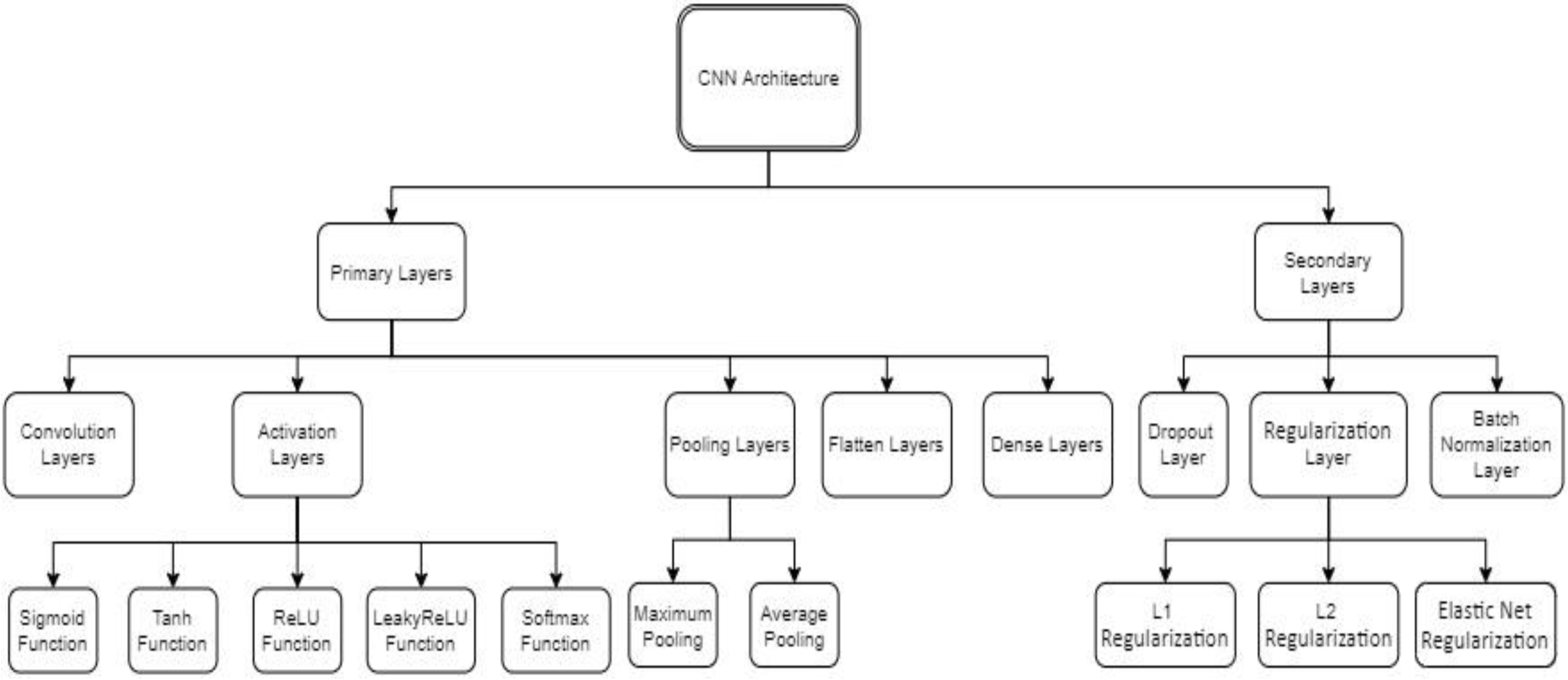

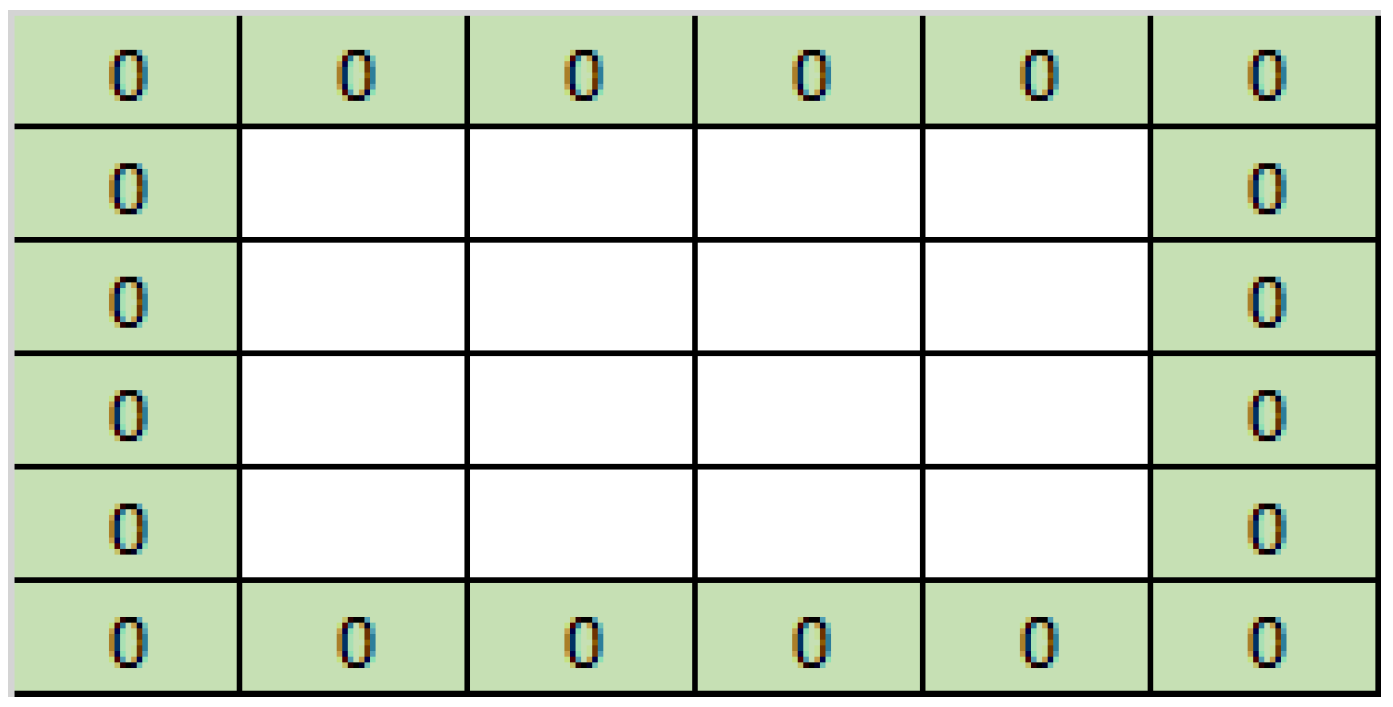
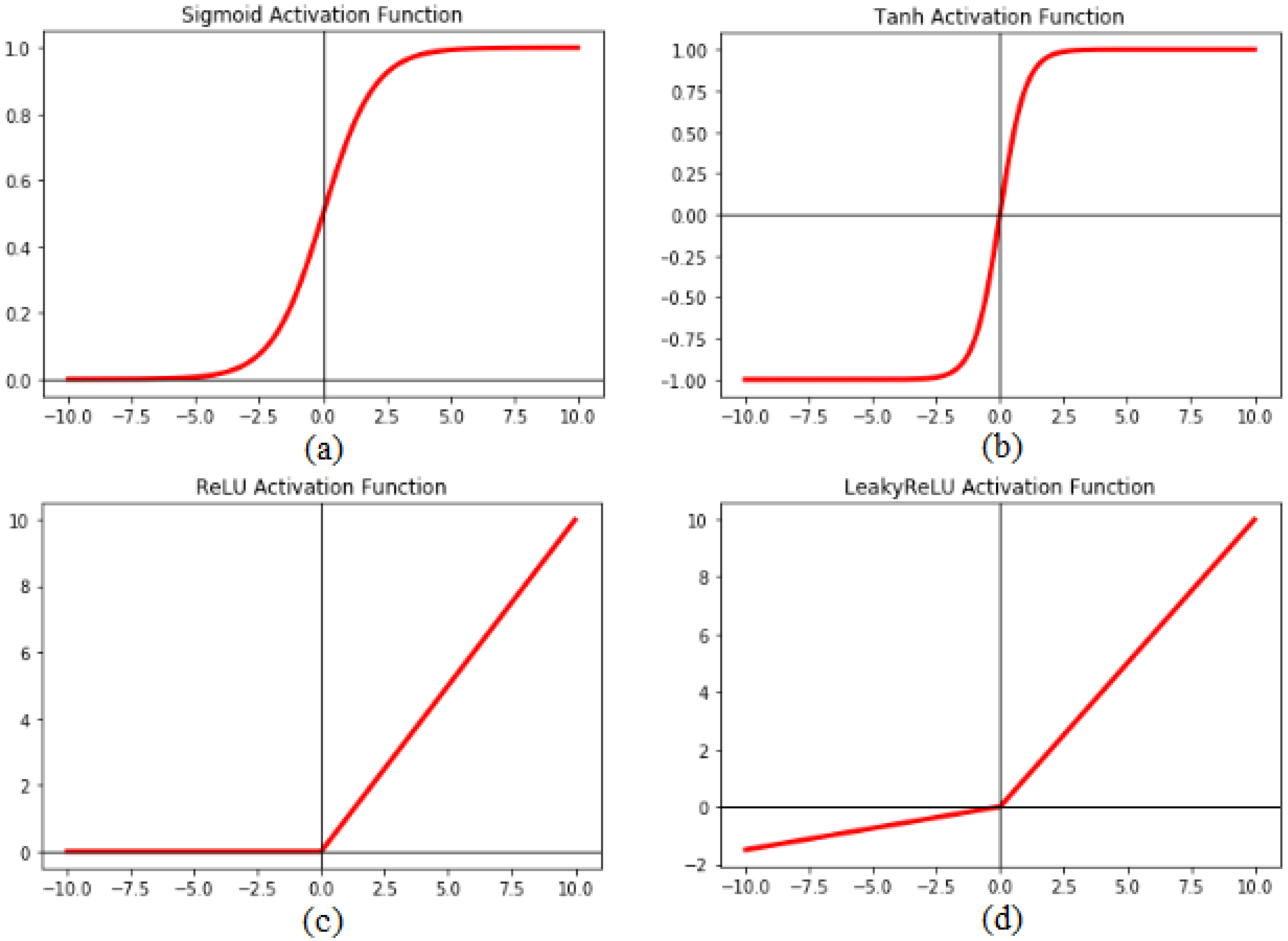
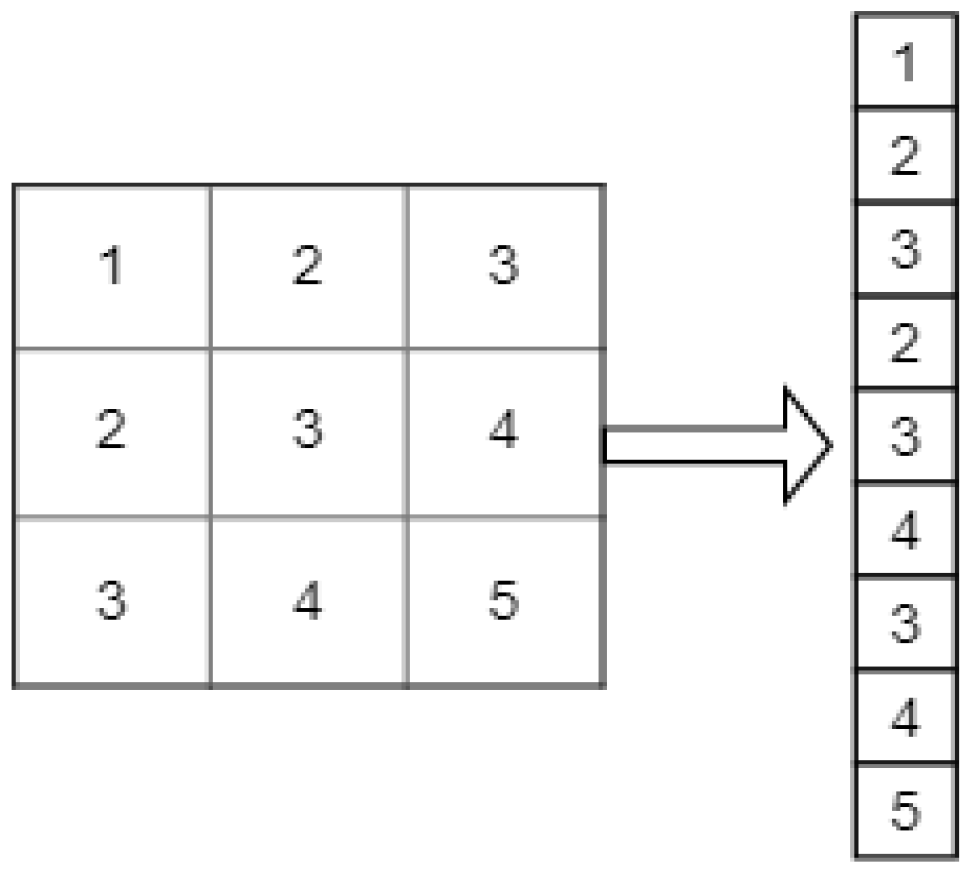

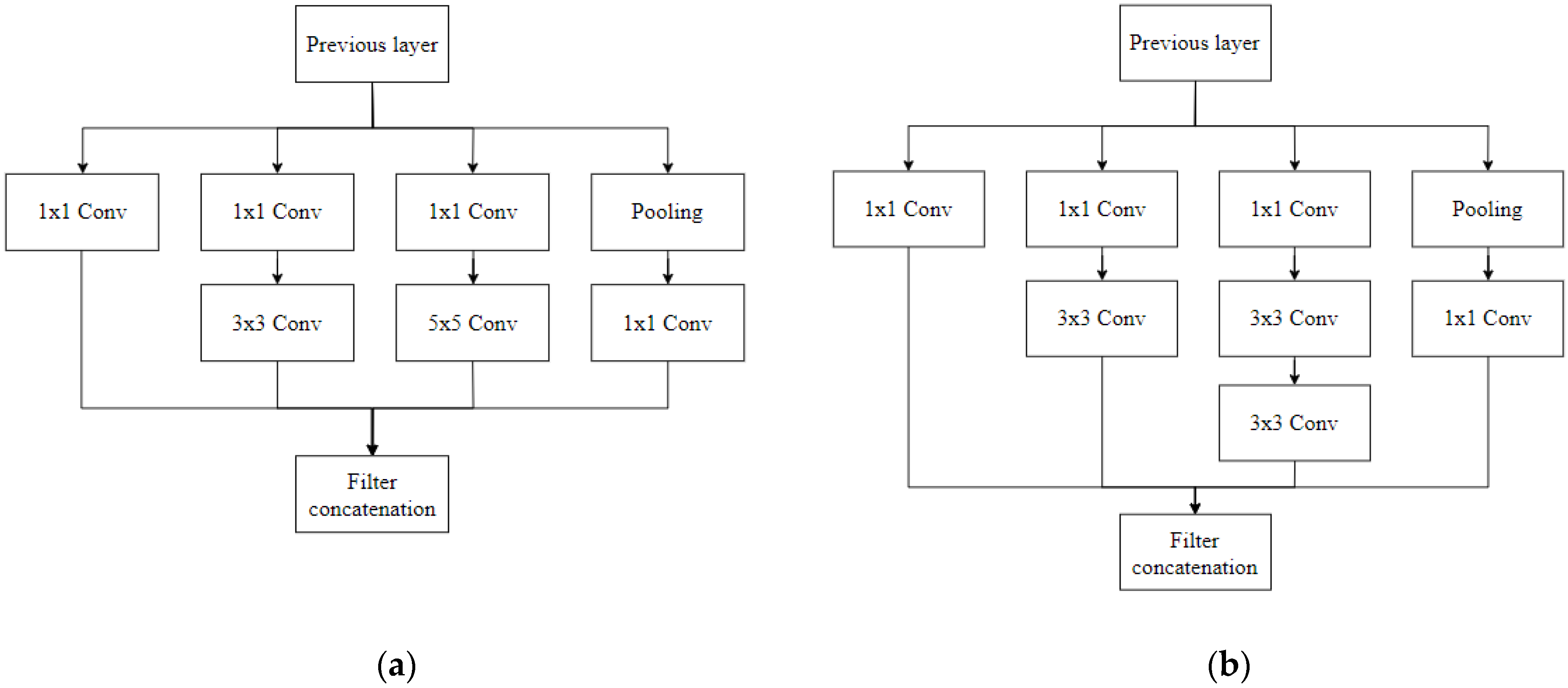
| Architecture | Number of Parameters | Top 5 Accuracy | Top 1 Accuracy |
|---|---|---|---|
| AlexNet | 62,378,344 | 84.60% | 63.30% |
| VGG16 | 138,357,544 | 91.90% | 74.40% |
| GoogLeNet | 23,000,000 | 92.2% | 74.80% |
| ResNet-152 | 25,000,000 | 94.29% | 78.57% |
| DenseNet | 8,062,504 | 93.34% | 76.39% |
| Xception | 22,910,480 | 94.50% | 79.00% |
| Dataset | Size | Grades |
|---|---|---|
| Kaggle | 88,000 | 5 |
| Messidor | 1200 | 4 |
| DR1 | 1014 | 2 |
| E-ophtha | 463 | 2 |
| STARE | 397 | 14 |
| Study | Architecture | Number of Classes | Dataset | Dataset Size | Performance Measure | Results |
|---|---|---|---|---|---|---|
| Gulshan et al. [53] | InceptionV3 | 2 classes | Private | 128,175 | Sensitivity | 97.5% |
| Masood et al. [54] | InceptionV3 | 5 classes | Kaggle | 4000 | Accuracy | 48.8% |
| Li et al. [55] | AlexNet VGG-S VGG16 VGG19 | 2 classes - - - | Messidor DR1 - - | 1200 1014 - - | AUC - - - | 77.27% * 98.34% * 74.37% * 68.69% * |
| Mohammadian et al. [56] | InceptionV3 Xception | 2 classes | Kaggle | 35,126 | Accuracy | 87.12% 74.49% |
| Takahashi et al. [57] | GoogLeNet | 4 classes | Private | 9443 | Accuracy Kappa | 81% 0.74 |
| Choi et al. [58] | VGG19 AlexNet | 10 classes | STARE | 10,000 | AUC | 90.3% * 81.6% |
| Wang et al. [59] | AlexNet VGG16 InceptionV3 | 5 classes | Kaggle | 166 | Accuracy | 37.43% 50.03% 63.23% |
| Hazim et al. [60] | AlexNet | 2 classes | Messidor | 580 | Accuracy | 88.3% |
| Lam et al. [61] | AlexNet VGG16 GoogLeNet ResNet InceptionV3 | - - 2 classes - - | Kaggle e-ophtha - - - | 1050 274 - - - | Accuracy - - - - | 79% 90% 98% 95% 98% |
| Lam et al. [62] | AlexNet GoogleNet VGG16 | 2 classes - - | Kaggle Messidor - | 35,000 1200 - | Sensitivity Specificity - | 95% * 96% * - |
| Wan et al. [63] | AlexNet VGG-S VGG16 VGG19 GoogLeNet ResNet | 5 classes | Kaggle | 35,126 | AUC | 93.42% 97.86% 96.16% 96.84% 92.72% 93.65% |
| Xu et al. [64] | DenseNet | 5 classes | Private | 20,000 | Error rate | 17.48% * |
| Tsighe et al. [65] | InceptionV3 | 2 classes | Kaggle | 2500 | Accuracy Loss | 90.9% 3.94% |
| Chen et al. [66] | InceptionV3 | 5 classes | Kaggle | 7023 | Kappa Accuracy | 0.64 80% |
| Zeng et al. [67] | InceptionV3 | 2 classes 5 classes | Kaggle | 28,104 | Kappa AUC | 0.829 95.1% |
| Zhang et al. [68] | ResNet DenseNet | 4 classes | Private | 13,767 | Sensitivity Specificity | 98.1% * 98.9% * |
| Yip et al. [69] | VGG16 ResNet | 3 classes | Private | 148,266 | AUC | 95.8% * 99.4% * |
| Gao et al. [70] | Inception@4 InceptionV3 ResNet18 ResNet101 VGG19 | 4 classes | Private | 4476 | Accuracy | 88.72% 88.35% 87.61% 87.26% 85.50% |
| Architecture | Count |
|---|---|
| InceptionV3 | 9 |
| AlexNet | 7 |
| VGG16 | 6 |
| VGG19 | 3 |
| VGG-S | 2 |
| Xception | 2 |
| DenseNet | 2 |
| ResNet | 5 |
| GoogleNet | 4 |
| Dataset | Count |
|---|---|
| Kaggle | 9 |
| Messidor | 3 |
| Private | 6 |
| e-ophtha | 1 |
| DR1 | 1 |
| STARE | 1 |
| Optimizer | Count |
|---|---|
| Stochastic gradient descent optimizer (SGD) | 5 |
| Stochastic gradient descent optimizer with momentum (SGDM) | 3 |
| Adaptive Moment Estimation (Adam) | 3 |
| Root Mean Square Propagation (RMSProp) | 1 |
© 2020 by the authors. Licensee MDPI, Basel, Switzerland. This article is an open access article distributed under the terms and conditions of the Creative Commons Attribution (CC BY) license (http://creativecommons.org/licenses/by/4.0/).
Share and Cite
Kandel, I.; Castelli, M. Transfer Learning with Convolutional Neural Networks for Diabetic Retinopathy Image Classification. A Review. Appl. Sci. 2020, 10, 2021. https://doi.org/10.3390/app10062021
Kandel I, Castelli M. Transfer Learning with Convolutional Neural Networks for Diabetic Retinopathy Image Classification. A Review. Applied Sciences. 2020; 10(6):2021. https://doi.org/10.3390/app10062021
Chicago/Turabian StyleKandel, Ibrahem, and Mauro Castelli. 2020. "Transfer Learning with Convolutional Neural Networks for Diabetic Retinopathy Image Classification. A Review" Applied Sciences 10, no. 6: 2021. https://doi.org/10.3390/app10062021
APA StyleKandel, I., & Castelli, M. (2020). Transfer Learning with Convolutional Neural Networks for Diabetic Retinopathy Image Classification. A Review. Applied Sciences, 10(6), 2021. https://doi.org/10.3390/app10062021






